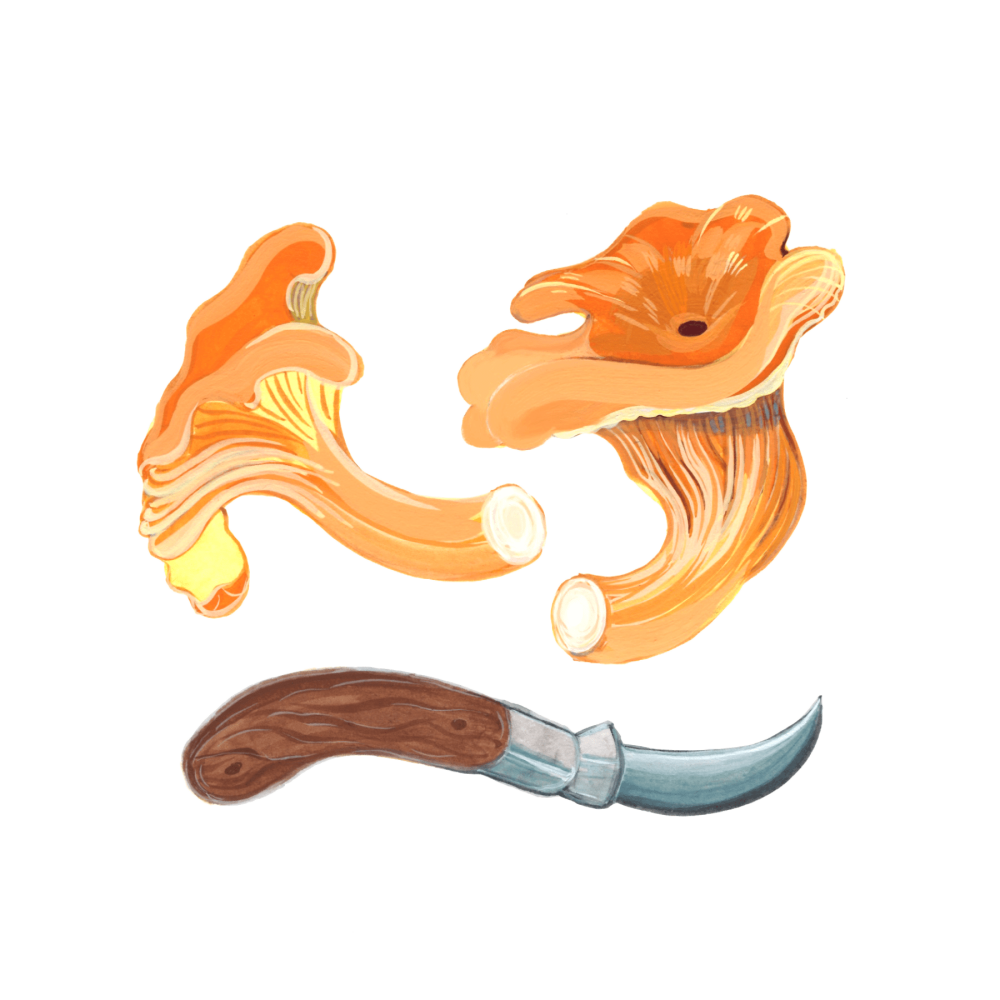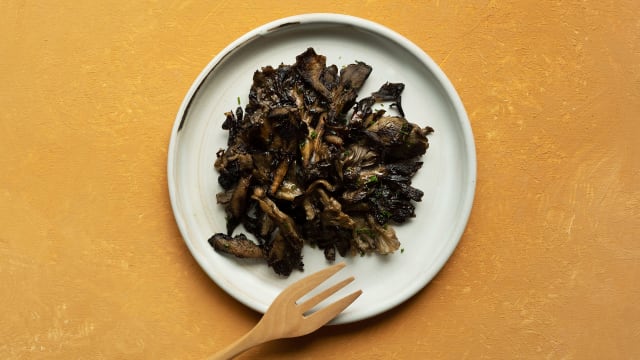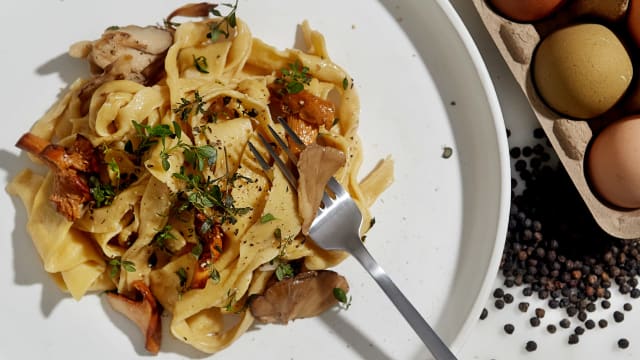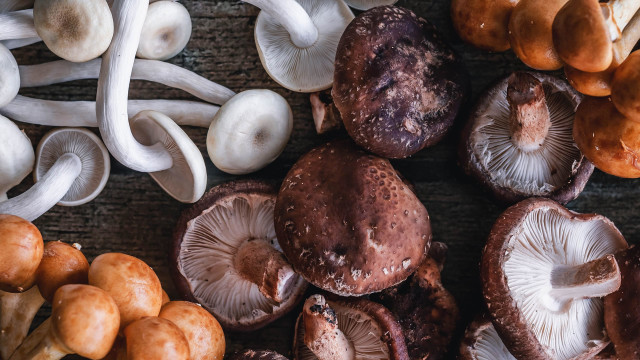Chanterelle

Latin name: Cantharellus spp.
Other names: girolle, pfefferling, anzutake
Uses: mushroom
What are chanterelles?
The name chanterelle describes a variety of edible wild mushrooms in several genera — some of which rank among the world’s finest eating mushrooms, along with matsutake, porcini, and morels. They range from pale yellow to medium orange, with decurrent, forked folds instead of gills and a squat, plump trumpet shape.
Why are chanterelles healthy?
Although chanterelles are not prized as much as other mushroom species for their medicinal properties, researchers are studying chanterelles for possible anti-cancer properties. Like all mushrooms, they are an excellent source of D and B vitamins and contain an impressive array of anti-microbial, anti-fungal, and antibacterial properties.
What do chanterelles taste like?
Fruity, woodsy, and a little spicy. Because there are so many different types of chanterelles, there’s significant flavor variation. While they possess loads of fungal umami, chanterelles are almost floral, with a sweet perfume that hovers intriguingly between kingdoms. Their bright orange color is an indication of how special they are; these are not your everyday button mushrooms.
How do I use chanterelles?
Because chanterelles are so expensive, it’s best to keep the preparation simple. Many of their most aromatic flavors are fat or alcohol soluble, so sautéing them with garlic in a little oil, butter, or cream and then deglazing with a splash of wine is a good idea. Add a little parsley or thyme to the pan right before serving and you’re in business.
What do chanterelles pair well with?
Like all mushrooms, chanterelles love the aforementioned garlic, butter, and herb combination, and they also get along well with toothsome whole grains.
Where do chanterelles grow?
Cantharellus species grow wild across large areas of Europe, Asia, Africa, and North and Central America. They like coniferous and mixed hardwood forests with birch, beech, and oak, especially grassy areas at the edge of denser woods. Chanterelle season generally runs from summer into early fall depending on the region and altitude. They are extremely difficult to cultivate outside of a laboratory, so they can only be foraged in the wild.
How to buy chanterelles:
In season, they can be found at some grocery and gourmet stores. Look for plump specimens that aren’t slimy or dried out.
Fun chanterelle fact:
The Japanese name for chanterelles is anzutake, meaning “apricot mushroom,” and chanterelles do share flavor compounds with that similarly-colored fruit. It may seem like an unlikely pairing, but it works (try deglazing the pan with a little apricot brandy).





